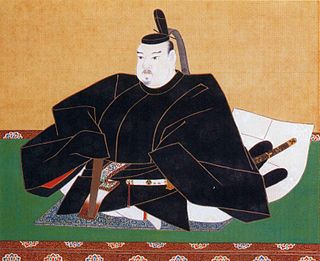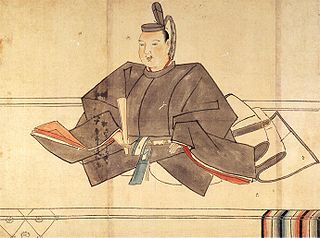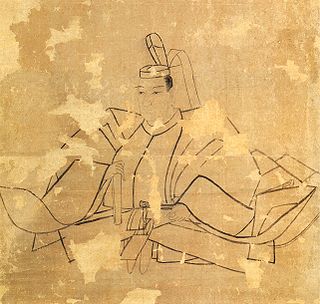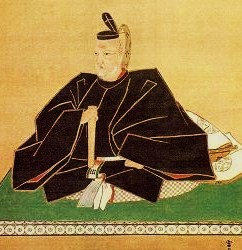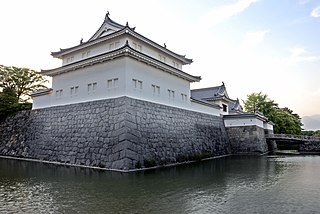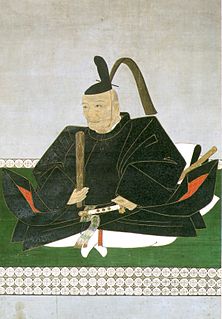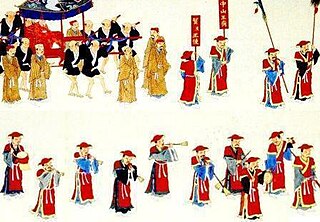
Doi Toshikatsu(土井 利勝, April 19, 1573 – August 12, 1644) was a top-ranking official in Japan's Tokugawa shogunate during its early decades, and one of the chief advisors to the second Tokugawa shogun, Hidetada.

The Tokugawa Shogunate, also known as the Tokugawa Bakufu (徳川幕府) and the Edo Bakufu (江戸幕府), was the last feudal Japanese military government, which existed between 1603 and 1867. The head of government was the shōgun, and each was a member of the Tokugawa clan. The Tokugawa shogunate ruled from Edo Castle and the years of the shogunate became known as the Edo period. This time is also called the Tokugawa period or pre-modern.

Tokugawa Hidetada was the second shōgun of the Tokugawa dynasty, who ruled from 1605 until his abdication in 1623. He was the third son of Tokugawa Ieyasu, the first shōgun of the Tokugawa shogunate.
The adopted son of Doi Toshimasa, Toshikatsu is generally believed to be the biological son of Mizuno Nobumoto, though there are some who claim he was an illegitimate son of shogun Tokugawa Ieyasu. He served the shogunate as advisor to shogun Tokugawa Hidetada for many years, and played an important role in communicating and overseeing the enforcement of shogunal policy across the country; Doi also helped effect trade and diplomatic relations between Japan and the Thai Kingdom of Ayutthaya. He lost much of his influence and power upon Hidetada's death in 1632. Six years later, Doi became one of the first to be appointed to the newly created post of Tairō (Great Elder), and was made daimyō (feudal lord) of Koga Domain in Shimōsa Province, with a revenue of 160,000 koku .
Mizuno Nobumoto was a daimyō of Japan's Sengoku period. A son of Mizuno Tadamasa, and brother of Mizuno Tadashige, he was the lord of Kariya Castle. He is Tokugawa Ieyasu's uncle through Tokugawa Hirotada's marriage to his sister.

Tokugawa Ieyasu was the founder and first shōgun of the Tokugawa shogunate of Japan, which effectively ruled Japan from the Battle of Sekigahara in 1600 until the Meiji Restoration in 1868. Ieyasu seized power in 1600, received appointment as shōgun in 1603, and abdicated from office in 1605, but remained in power until his death in 1616. His given name is sometimes spelled Iyeyasu, according to the historical pronunciation of the kana character he. Ieyasu was posthumously enshrined at Nikkō Tōshō-gū with the name Tōshō Daigongen (東照大権現). He was one of the three unifiers of Japan, along with his former lord Nobunaga and Toyotomi Hideyoshi.

The Ayutthaya Kingdom was a Siamese kingdom that existed from 1350 to 1767. Ayutthaya was friendly towards foreign traders, including the Chinese, Vietnamese, Portuguese, Indians, Japanese, Koreans, Persians, and later Spaniards, Dutch, English, and French, permitting them to set up villages outside the walls of the capital, also called Ayutthaya.

